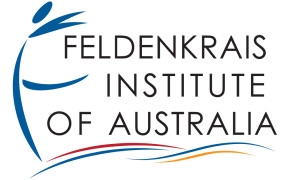Zoran Kovich – Stepping Through the Dance of Life
“I decided to be a teacher when I was a teenager – that’s the common link to everything,” Zoran Kovich says.
Zoran’s career has led him onto the stage as a dancer with the Australian Opera, into martial arts, through the study of cognitive science, the teaching of somatics and anatomy at universities, and into the rich world of the Feldenkrais Method.
While teaching is the common thread, two other passions fuel Zoran’s work: movement and ideas.
Zoran has found these passions converging both in dance and in somatics. While training as a dancer at the Victorian College of the Arts (VCA), Zoran was introduced to Ideokinesis, a somatic learning method developed in the 1930s. “My teachers were saying, ‘You seem to be getting more flexible, jumping higher – what’s going on?’ That was my introduction to somatics work and from then on I was looking for some training.”
The training Zoran found was in the Feldenkrais Method. But that’s where his story took an unexpected turn. Early in the training, Zoran suffered a back injury while performing, and had major disc prolapses. Here the training became quite psychologically and emotionally painful for the young dancer because it was “very easy for me to get sucked into desiring the movement”.
However, the training became a godsend as well. “Without the Method, I wouldn’t have been able to continue as a dancer. I would have been another dance statistic with a bad back having undergone surgery.” Zoran chose not to undergo surgery, and went on to get drawn into another aspect of the training – ideas, the intellectual meat around the Method. “I was interested in the relationship between the thinking and the moving – the mind and the motion.”
Zoran is known in the Feldenkrais profession for his enthusiasm for exploring new research – for example, mirror neurons – and bringing these ideas into the exploratory practice of the Feldenkrais Method.
Zoran has brought the Method into the lives of countless performers over 19 years teaching somatics at universities, especially the University of Western Sydney and the Aboriginal and Torres Strait Islander Dance college. The Feldenkrais Method was always his “primary vehicle”. “I had a lot of other perspectives from other somatic disciplines but Feldenkrais was always the binding thinking. It has the most overarching methodology.”
For someone who loves learning, the Feldenkrais Method offers ample opportunities. Even now, as a trainer in professional Feldenkrais courses, Zoran feels he has much more to learn. “From a movement base, I can lie on the floor and if I’ve got an ache or pain or some limitation, I can work that out pretty quickly. But when it comes to the psychological realm, personal relations, this is the part of the Method that I haven’t fully applied yet. There’s plenty more room for development.”


